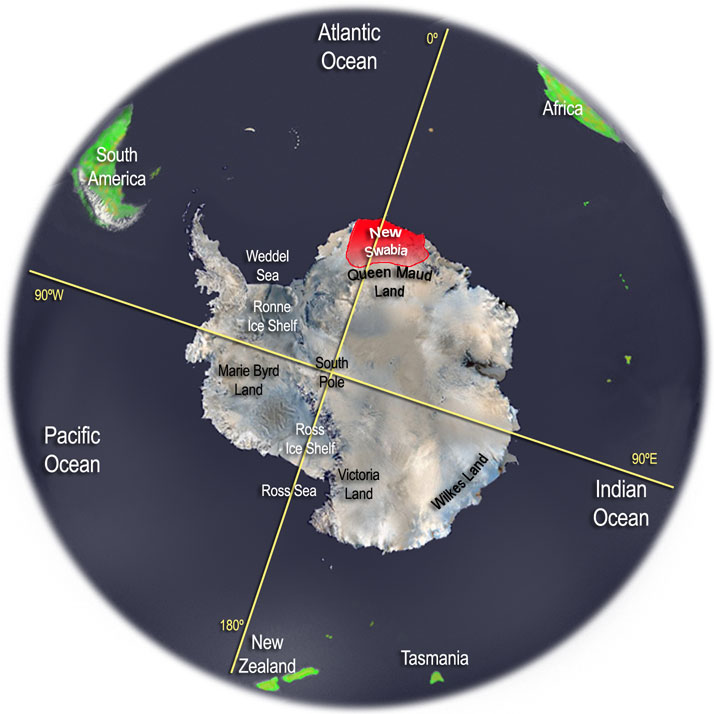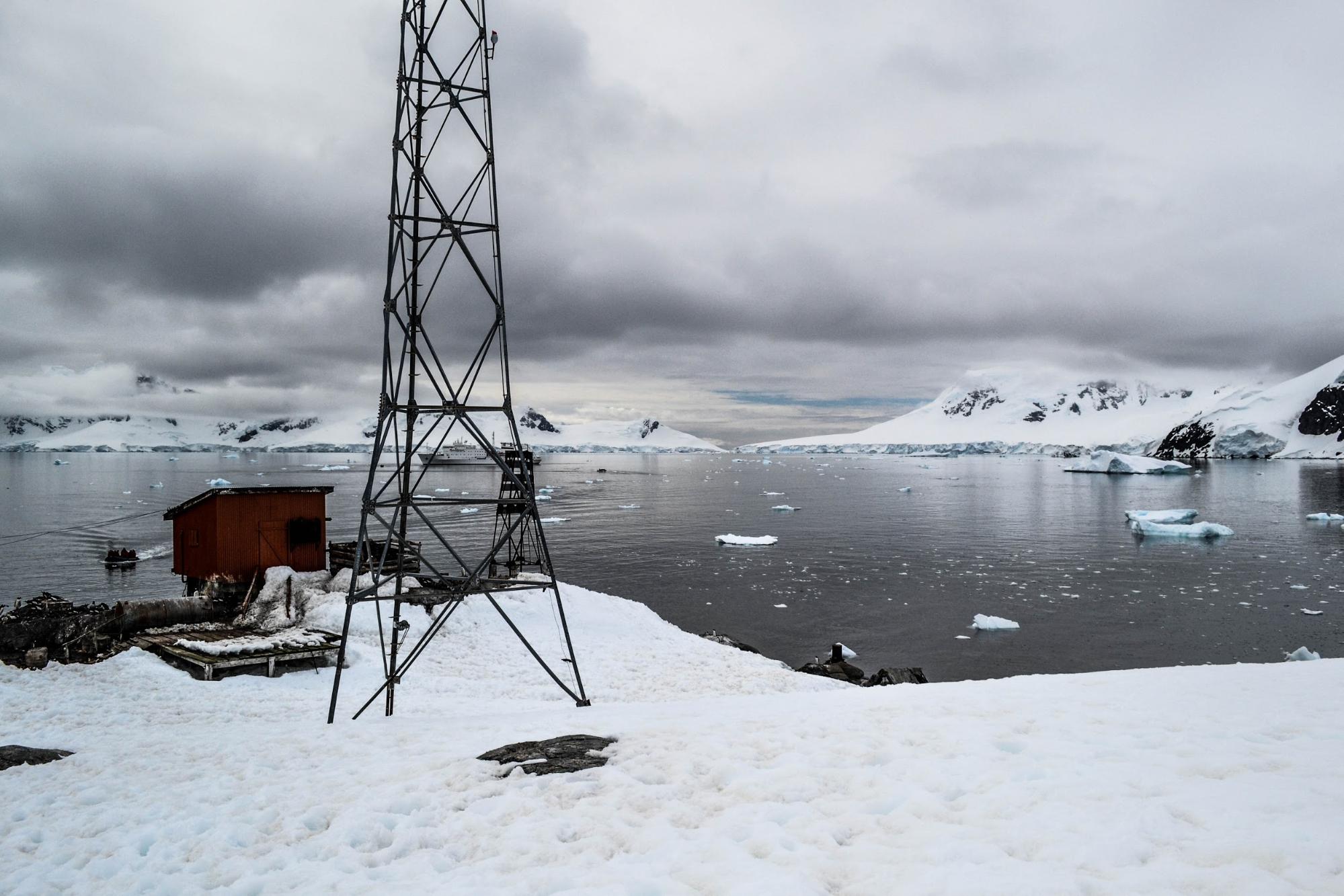Another revisit and this time the author makes the case for this been a hoax which is the most reasonable prospect.
High Jump did occur and serious damage took place. There is enough actual interest to ensure investigators would have accessed any material that was at least vanilla envelope. This story is easily debunked by a review of ship's logs and the like. Instead we have absence of such semi official debunking.
The core story is that Germany attracted an alien joint venture during the thirties. This is completely reasonable for two reasons. The first been that Germany led the world in terms of quality research. The second been that the USA set up an equivalent JV with aliens shortly after the war. All of this has been slammed under secrecy. Note that the Germans were blocked from using any alien tools in the war effort.
Then we have clear evidence that 5000 high end scientists et all disappeared toward the end of the war itself. That surely confirms real intent to establish a hidden research base. The rest is noise then and we need to ask what was possible.
Quite a lot frankly. First off, it was never necessary to start with a full base in Antarctica. The Argentine was also available and establishing in the mountains there would work. I do think that Hitler ended up there for part of his remaining life and we do have additional reports of abandoned way stations capable of handling real traffic as well. This all allowed for support for a separate expedition to build a permanent facility in Antarctica for later occupation along with effective protection.
Such an expedition would involve a mining battalion who would excavate in competent rock an underground complex of rooms able to house and generally harbor such a force. This gets it completely out of sight. It also does not have to be in Swabenland in particular. A geothermal energy source would be necessary as well but these are a pretty low bar to cross...
If they really had alien support, then a superior location would have been identified and surely located close by such alien support. What is important though is that an expedition was possible and could have been fully operational during the war with supplies routed through Spain and shipping out to the Argentine with scant difficulty.
Resupply to Antarctica since would be as simple as an annual cargo ship in and out of Argentina. It was completely possible and may well be ongoing as a working enclave.
My point here is that a base can be established in both Argentina and in Antarctica during the time frames involved. We just did the same thing with GITMO and no land access was possible. In Argentina, one logistics forwarding company along with German truck drivers and you have ample security. We could do as much in New Mexico if we wanted to..
My point here is that a base can be established in both Argentina and in Antarctica during the time frames involved. We just did the same thing with GITMO and no land access was possible. In Argentina, one logistics forwarding company along with German truck drivers and you have ample security. We could do as much in New Mexico if we wanted to..
Fake News About a Secret Nazi UFO Base In Antarctica Refuses to Die
This researcher at Cambridge has a PhD and still had to take time to prove why the Nazi Antarctic UFO base is a hoax.
https://motherboard.vice.com/en_us/article/nz53eq/fake-news-about-a-secret-nazi-ufo-base-in-antarctica-refuses-to-die
Before we get into this let's make one thing clear: the secret Nazi UFO base in Antarctica doesn't exist. The Nazis did
go to Antarctica, but they didn't stash priceless European art in a
subterranean Antarctic lair where they also happened to be developing
flying saucers. That would be a totally insane thing to believe.
But as recently as 2016, articles mentioning the possible existence of this very thing can be found in tabloids like The Mirror, which reported on a possible Nazi UFO under Antarctic ice, as well as The Daily Star, which suggested that the Nazi UFO base may have ties to the giant alien ice pyramids under Antarctica.
In the age of Fake News and flat earthers,
it's not hard to see how an outlandish idea could retain currency. But
it's remarkable persistence over the half century prompted Colin
Summerhayes, a prominent marine geologist and oceanographer at
Cambridge, to write a 21-page, peer-reviewed paper
outlining all the reasons why the Nazis totally didn't build a secret
Antarctic base. Published a little over a decade ago in the quarterly
academic journal Polar Review, Summerhayes' paper is an
interesting survey of the paranoid conspiracy theories that began with a
secret Nazi mission to Antarctica in January, 1939.

Seal of the Nazi Antarctic expedition. Image: Summerhayes, et al.
Months
before the outbreak of World War II, Nazi Germany sent a small
expedition to Antarctica aboard a vessel called the Schwabenland.
According to Summerhayes, the expedition was prompted by German fears
about being cut out of the whaling industry by Norway and Britain, which
made large claims to portions of the Antarctic continent. So the Nazis
launched their own expedition to Antarctica with the intention of
claiming some of the seventh continent for themselves and establishing a
base for the German whaling fleet there.
Although this would end up being the Nazi's only visit to Antarctica,
rumors of a secret Nazi base harboring Hitler and his inner circle near
the South Pole began to spread immediately after the end of the war. The
occasion of these rumors was the arrival of a German U-boat
at an Argentine naval base in July, 1945, two months after the Nazis
surrendered. Newspapers around the world picked up a fallacious
Argentine news report that the U-boat had carried Hitler and other
ranking Nazis out of Germany to the secret base on Antarctica.

Unrecognized Nazi claim on Antarctica, known as New Swabia. Image: Wikimedia Commons
The
initial report of this rumor, spread by a Hungarian exile Ladislas
Szabo who was living in Argentina at the time, was propped up by a book
published by Szabo two years later titled (based on, it seems that even
the bureau had its suspicions about the escape of the Nazi leader).
Szabo's rumors only continued to pick up steam, and eventually in which
Hitler did in fact die in a Berlin bunker, but his ashes and other Nazis
treasures had been transported to Antarctica where they were stashed in
a "very special natural ice cave in the Muhlig-Hofmann Mountains."
Despite the fact that many captured Nazis offered irrefutable evidence
to the contrary of these claims, the rumor of Hitler's Antarctic base
persisted. This was, in part, due to a covert Antarctic mission carried
out by the US military in 1947 called Operation Highjump, as well as the
well-documented British military presence in Antarctica throughout the war. According to conspiracy theorists,
both the United States and Britain unsuccessfully attacked the secret
Nazi base multiple times in the late 40s, but only succeeded in
destroying it by dropping three atomic bombs above the base in 1958.
Ultimately, however, Summerhayes isn't convinced. Although he does
acknowledge that "there is an element of truth in all these tales," the
evidence doesn't seem to add up to a secret Nazi base in Antarctica.
In the first place, there is a pretty exhaustive recap in both German
scientific literature and recovered wartime documents of the 1939
expedition to Antarctica. While these documents do outline the marine
science and mapping efforts of the mission, there is no indication at
all that the Nazis had ever decided on a fitting location for an
Antarctic base, much less had begun to build one. As Summerhayes points
out, when Norwegian explorer Roald Amundsen built a small hut in
Antarctica in 1911, it took them 14 days and required the use of 80
dogs.
By contrast, the German expedition was only in Antarctica
for a month, and spent most of its time going up and down the coast
collecting marine samples and launching planes to do surveying work.
There is also no evidence that the ship had motorized equipment or dogs
on board, which would've made the task of ferrying supplies around the
Antarctic nearly impossible, especially to build a massive underground
complex where there were "hangars for strange planes" and bunkers for
the development of advanced weaponry.

A (non-Nazi) research outpost in Antarctica. Image: Daniel Oberhaus
And
what about Operation Highjump, the secret mission launched by the US in
Antarctica, supposedly to take out the Nazi base? The largest
expedition to ever go to Antarctica, Operation Highjump consisted of
4700 men, 33 aircraft, and 13 ships—which certainly sounds like an
invasion of sorts. While this was undoubtedly a military exercise, its
stated purpose was to train the US Navy to operate in freezing, polar
conditions in preparation for a possible war with the Soviet Union in
the Arctic.
Okay, Summerhayes, but how do you explain the Nazi UFOs in Antarctica, huh? These claims, first advanced in UFOs: Nazi Secret Weapon, a 1975 book published by a Canadian neo-nazi publishing house,
are derived from baseless reports that four American aircraft were shot
down by Nazis during Operation Highjump. This tied in with an esoteric,
post-war Nazism described in the 2002 history of occult Nazism, Black Sun, in which "flying saucers were in fact German super-weapons that had been developed and tested during the Third Reich."
According to Black Sun,
this technology which was "supposedly shipped to safety in the Arctic,
South America, and Antarctica" and "by the late 1970s, neo-Nazi writers
were claiming that the 'Last Battalion,' a massive Nazi military force
of highly advanced UFOs, was in possession of a vast tract of
Antarctica." Despite the claims made in the neo-Nazi tract that American
planes were shot down over Antarctica by Nazi flying saucers,
Summerhayes concludes "that the idea that Germans defended themselves
with flying saucers from a secret base" to be "pure fantasy," if for no
other reason than the only plane lost during the American expedition to
Antarctica crashed on the other side of the continent from the location
of the supposed Nazi base.
Sure, fine. But why drop three atomic bombs on Antarctica if there wasn't Nazis there?
Although there were three atmospheric nuclear explosions in the Southern hemisphere 1958, they were not over Antarctica—in fact, they were about 1500 miles north of the continent.
Summerhayes was
able to thoroughly debunk the existence of an Antarctic Nazi UFO base,
but the fact that the rumor persists a decade later should come as no
surprise. In the era of pizzagate and fake news, we know all too well
that the seduction of conspiracy will always trap at least a few
believers who are willing to accept the apparent absurdity of a story,
so long as it means that all the dots are connected.

No comments:
Post a Comment